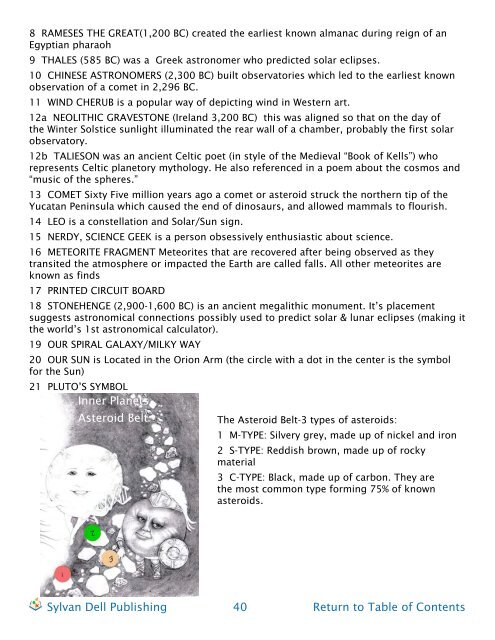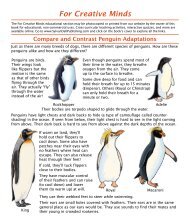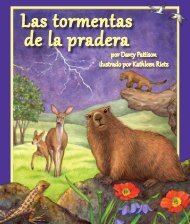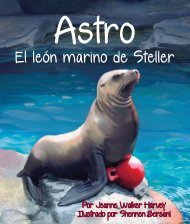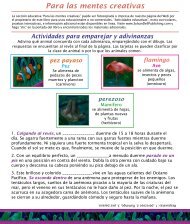Meet the Planets - Sylvan Dell Publishing
Meet the Planets - Sylvan Dell Publishing
Meet the Planets - Sylvan Dell Publishing
You also want an ePaper? Increase the reach of your titles
YUMPU automatically turns print PDFs into web optimized ePapers that Google loves.
8 RAMESES THE GREAT(1,200 BC) created <strong>the</strong> earliest known almanac during reign of an<br />
Egyptian pharaoh<br />
9 THALES (585 BC) was a Greek astronomer who predicted solar eclipses.<br />
10 CHINESE ASTRONOMERS (2,300 BC) built observatories which led to <strong>the</strong> earliest known<br />
observation of a comet in 2,296 BC.<br />
11 WIND CHERUB is a popular way of depicting wind in Western art.<br />
12a NEOLITHIC GRAVESTONE (Ireland 3,200 BC) this was aligned so that on <strong>the</strong> day of<br />
<strong>the</strong> Winter Solstice sunlight illuminated <strong>the</strong> rear wall of a chamber, probably <strong>the</strong> first solar<br />
observatory.<br />
12b TALIESON was an ancient Celtic poet (in style of <strong>the</strong> Medieval “Book of Kells”) who<br />
represents Celtic planetory mythology. He also referenced in a poem about <strong>the</strong> cosmos and<br />
“music of <strong>the</strong> spheres.”<br />
13 COMET Sixty Five million years ago a comet or asteroid struck <strong>the</strong> nor<strong>the</strong>rn tip of <strong>the</strong><br />
Yucatan Peninsula which caused <strong>the</strong> end of dinosaurs, and allowed mammals to flourish.<br />
14 LEO is a constellation and Solar/Sun sign.<br />
15 NERDY, SCIENCE GEEK is a person obsessively enthusiastic about science.<br />
16 METEORITE FRAGMENT Meteorites that are recovered after being observed as <strong>the</strong>y<br />
transited <strong>the</strong> atmosphere or impacted <strong>the</strong> Earth are called falls. All o<strong>the</strong>r meteorites are<br />
known as finds<br />
17 PRINTED CIRCUIT BOARD<br />
18 STONEHENGE (2,900-1,600 BC) is an ancient megalithic monument. It’s placement<br />
suggests astronomical connections possibly used to predict solar & lunar eclipses (making it<br />
<strong>the</strong> world’s 1st astronomical calculator).<br />
19 OUR SPIRAL GALAXY/MILKY WAY<br />
20 OUR SUN is Located in <strong>the</strong> Orion Arm (<strong>the</strong> circle with a dot in <strong>the</strong> center is <strong>the</strong> symbol<br />
for <strong>the</strong> Sun)<br />
21 PLUTO’S SYMBOL<br />
Inner <strong>Planets</strong><br />
Asteroid Belt<br />
The Asteroid Belt-3 types of asteroids:<br />
1 M-TYPE: Silvery grey, made up of nickel and iron<br />
2 S-TYPE: Reddish brown, made up of rocky<br />
material<br />
3 C-TYPE: Black, made up of carbon. They are<br />
<strong>the</strong> most common type forming 75% of known<br />
asteroids.<br />
<strong>Sylvan</strong> <strong>Dell</strong> <strong>Publishing</strong> 40 Return to Table of Contents


